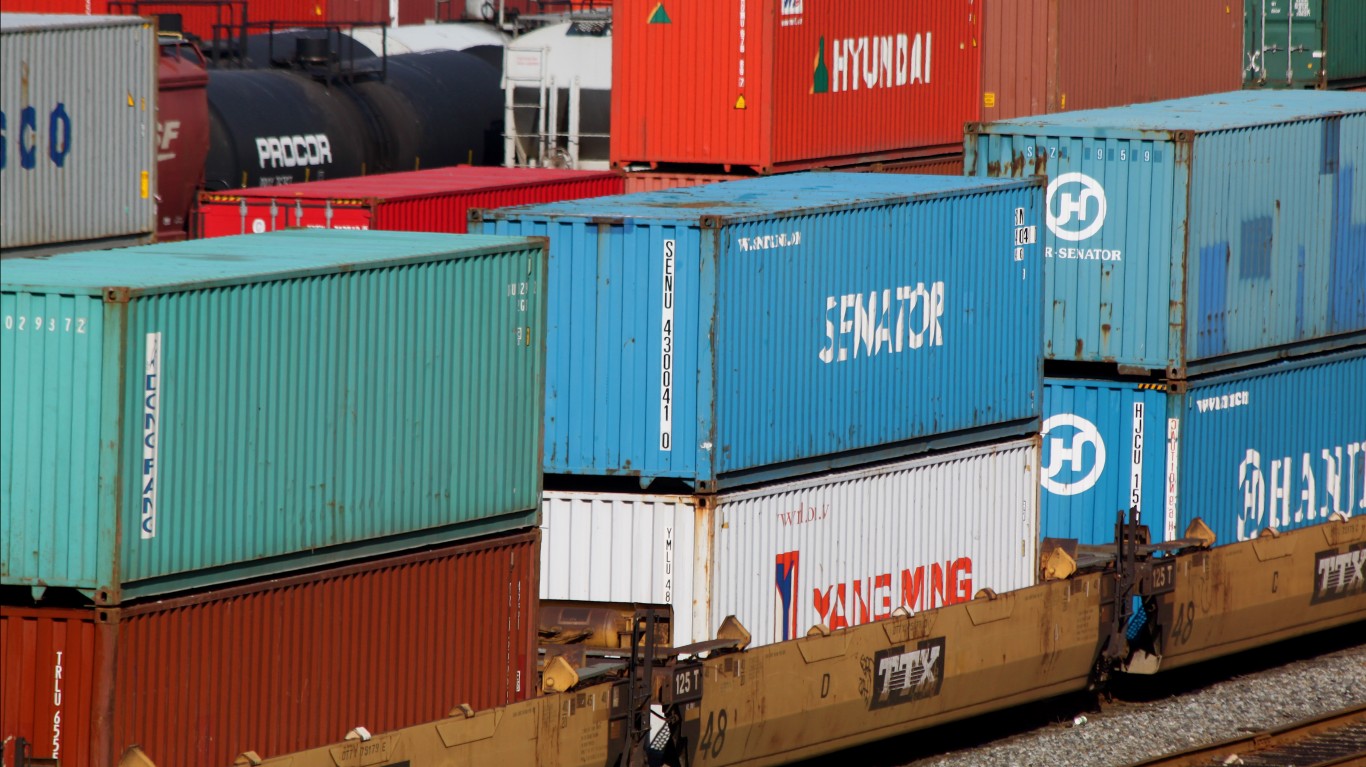
Most research in the U.S. related to drugs and prostitution focuses on the costs to society of these sins. And there are plenty of costs. Nearly 21% of the U.S. prison population is doing time for drug offenses at an annual total cost of around $8.2 billion. U.S. health care costs are about $11 billion higher every year due to drug use, and when crime-related costs and lost productivity are added in, the costs total $193 billion.
Prostitution, often called the world’s oldest profession, is equally entitled to be called the world’s most dangerous profession. The mortality rate for active prostitutes has been calculated at 229 per 100,000 person-years, 77% higher than the mortality rate among fishermen, often cited as the most dangerous profession in the United States.
ALSO READ: The Heaviest-Drinking Countries in the World
How these costs would be lowered were prostitution and drugs legalized is a discussion for another time. What we want to look at now is how much income the two activities would contribute to U.S. GDP.
The Office of National Drug Control Policy (ONDCP) prepared a report in 2012 that contained estimates of both the quantity of four classes of drugs and the price paid for those drugs for the years 2001 through 2006. The drug classes are marijuana, cocaine, heroin and methamphetamine.
According to the ONDCP report, 15.6 million total marijuana users in the United States in 2006 spent $33.7 billion on 4,285.1 metric tons (2,200 lbs.) of marijuana.
Cocaine users totaled 2.78 million chronic users in 2006, and they spent $37.8 billion to purchase 389.6 metric tons of cocaine.
There were 1.33 million chronic methamphetamine users, who spent $17.9 billion on 157.3 metric tons of meth.
Finally, 841,000 chronic heroin users spent $11 billion on 27.6 metric tons of the drug.
Expenditures on these four classes of drugs totaled $100.4 billion in 2006. These classes do not include expenditures for illegal use of legal drugs like Vicodin and Adderall. These are not included in the total because the drugs were sold legally at some point and already appear in the U.S. GDP calculation. The U.S. National Drug Intelligence Center (the agency was closed in 2012) estimated that the total cost of prescription drug abuse in the U.S. totaled $72.5 billion in 2009.
This estimate could be low. According to a report in the International Business Times:
An analysis of recent surveys and research studies places the size of the illegal U.S. drug market at $200 billion to $750 billion per year, with most estimates coming in between $400 billion and $500 billion.
The analysis was done by ConvergE Group, a global brokerage based in New York. One interesting observation from the analysis is that in states where marijuana sales are legal — either for medicinal purposes or recreational use — street availability of the drug keeps the price of the legally dispensed marijuana low. Because street dealers enjoy massive mark-ups, they can cut their prices and still make an abundant profit while a legal seller’s profit is constrained by overhead and taxes.
Estimates on the economic impact of prostitution are harder to find. One undocumented estimate we have seen is $14.6 billion a year, which may sound small compared with the triple-digit billions in spending on illegal drugs. But prostitution rakes in more cash than movie box offices (about $11 billion in 2013, according to Box Office Mojo) or professional football. Total revenue in the National Football League was around $10 billion for the season just past.
A study published in March of this year estimated that the “underground commercial sex economy” in seven U.S. cities in 2007 totaled $975.3 million. The total population of those cities was about 5.3 million, out of a total U.S. population in 2007 of about 298.4 million. A back-of-the-envelope calculation puts per capita spending on prostitution at $184 in the seven cities and a grand total of nearly $55 billion extrapolated to the entire U.S. population.
In states where marijuana sales are legal (Colorado and Washington) those sales will be included in U.S. income statistics just as legal prostitution in Nevada is currently included. But looking at the underground economy overall, we have come up with a low estimate of around $115 billion for drugs and prostitution ($100.4 billion for drugs and $14.6 billion for prostitution) to a high of $805 billion ($750 billion for illegal drugs and $55 billion for prostitution).
As a percentage of U.S. GDP, $115 billion represents about 0.7% of total GDP and $805 billion represents about 4.8% of total U.S. GDP. At the median point of $455 billion, U.S. spending on prostitution and drugs equals about 2.7% of U.S. GDP.
At the median of $455 billion, illegal drugs and prostitution approach the $512 billion in GDP supplied by the agriculture, forestry, fishing and hunting industry in 2013. At $805 billion, drugs and prostitution are nearly a third larger than the U.S. mining industry. And at the low calculation of $115 billion, prostitution and drugs are almost equal to the U.S. amusements, gambling and recreation industries contribution of $124.6 billion to the nation’s GDP.
No matter which estimate you believe, sex and drugs are big business in the United States.
ALSO READ: America’s Most Unusual Public Companies
Are You Still Paying With a Debit Card?
The average American spends $17,274 on debit cards a year, and it’s a HUGE mistake. First, debit cards don’t have the same fraud protections as credit cards. Once your money is gone, it’s gone. But more importantly you can actually get something back from this spending every time you swipe.
Issuers are handing out wild bonuses right now. With some you can earn up to 5% back on every purchase. That’s like getting a 5% discount on everything you buy!
Our top pick is kind of hard to imagine. Not only does it pay up to 5% back, it also includes a $200 cash back reward in the first six months, a 0% intro APR, and…. $0 annual fee. It’s quite literally free money for any one that uses a card regularly. Click here to learn more!
Flywheel Publishing has partnered with CardRatings to provide coverage of credit card products. Flywheel Publishing and CardRatings may receive a commission from card issuers.
Thank you for reading! Have some feedback for us?
Contact the 24/7 Wall St. editorial team.



